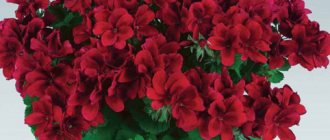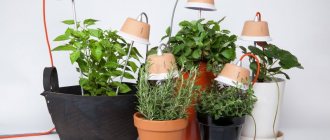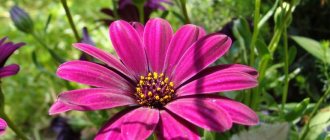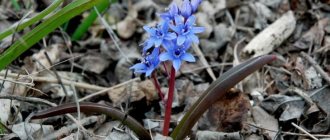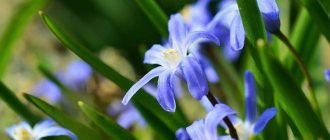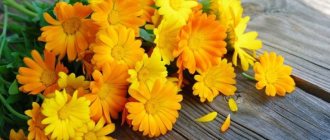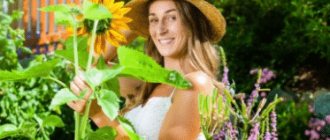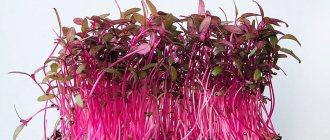Good luck in growing. Alena February 06, 2022, 21:48 // Guest book –
I want to say a big thank you to Alena for the wonderful children. All so beautiful, juicy and strong. Svetlana February 06, 2022, 12:32 // Guest book –
Of course you can, email the list. Alena July 26, 2022, 08:15 // Contacts – Flower Paradise
Thank you, Lyudmila! Good luck in growing. Alena July 26, 2022, 08:15 // Guest book –
A delicate flower in your home - description of Lady Gertrude pelargonium, care tips and photos of the plant
Introduction Lady Gertrude is one of the most attractive varieties of Pelargonium, distinguished by its extraordinary beauty and delicacy of its appearance. Caring for this plant is somewhat different, but its aesthetics are really worth all the effort. This article will tell you what Lady Gertrunda is, what it looks like and blooms, how to propagate it, and how to deal with diseases and pests that threaten it.
Botanical description and history
Pelargonium Lady Gertrude is a hybrid variety resulting from crossing zonal and ivy-leaved pelargoniums. To obtain this variety, breeders worked for about 25 years. The result of this work is an amazing plant that looks like a very delicate rose.
Lady Gertrude has an underground rhizome with alternating thick and thin sections. Large pink petals appear on a small number of flower stalks, which, growing and blooming, take the form of a rose, which makes the resemblance to the latter so noticeable.
It is also distinguished by the presence of large textured decorative leaves. The bush itself is low-growing, tends to grow in width, but at the same time it is quite dense , thanks to which Pelargonium can be given absolutely any shape.
Below you will see a photo of the flower:
Features of the plant
The main feature of this Pelargonium variety is late flowering . In addition, as mentioned above, of all other species, this is the most attractive, according to almost all gardeners, many of whom really dream of getting it.
In addition, despite its extraordinary beauty, this plant is capable of pleasing the eye even when mistakes are made in caring for it, which is a definite plus for a beginner in this business.
Geranium and fragrant pelargonium: varieties and varieties
Several hundred varieties of fragrant geraniums can be found freely available in specialized nurseries and in amateur collections. Based on the direction of aromas, the following variety series are distinguished.
Pelargonium lemon
Geranium at home - where is it better to place it in an apartment, in a flower pot or on a windowsill?
This name was given to a variety of fragrant pelargonium, represented by various varieties, for example, Pelargonium x species Grandeur Odorata Perfum, Mabel Gray.
It is characterized by a tall (35-70 cm) crown with large heart-shaped, strongly dissected, slightly fleecy, bright green, lemon-fluffed leaves with pointed tips. This is what lemon balm or lemon balm smells like.
Lemon-scented geranium blooms reluctantly in racemose inflorescences consisting of 3-15 buds, blooming in the form of 5-petalled corollas of a light pink hue with purple spots on two petals and a large pistil of the same hue.
For reference! It lends itself well to shaping by pruning; in general, caring for lemon geraniums is very simple.
Lemon geranium
Pelargonium Candy Dancer
Fragrant pelargonium with a light sweetish pleasant aroma, reminiscent of a mixture of lemon and rose. The variety was bred in 2002.
The very delicate light green foliage is somewhat reminiscent of a hogweed leaf. The leaves are covered with stiff, whitish bristles that emit a strong odor when touched. This geranium with carved leaves has 5-petalled light pink or lilac flowers.
Fragrant pelargonium Candy Dancer
Pelargonium "Chocolate"
So far, breeders have not been able to obtain pelargonium with the exact aroma of chocolate, but work in this direction is underway.
To a first approximation, chocolate notes combined with mint are found in the leaves of the Chocolate Peppermint variety. The foliage of this pelargonium is slightly reminiscent of maple in shape and has a large brown-burgundy spot in the center.
Pelargonium Chocolate Peppermint
Pelargonium Ardwick Cinnamon
The species hybrid obtained from Pelargonium fragrans has a pleasant aroma of wormwood with notes of cinnamon.
The leaves are typical of royal pelargoniums, harsh, light green, corrugated at the edges, with velvety pile, giving the crown a bluish touch.
Variety Ardwick Cinnamon
Pelargonium Charity
The leaves of this pelargonium have a lemon-resinous aroma. Their color is variegated - it combines sectors of light and dark green.
It blooms in small racemes of pink 5-petalled flowers. The crown is extended upward. Remains compact with regular pruning.
Varietal pelargonium Charity
Pelargonium Gemstone
A bush with smooth, erect shoots up to 60 cm high. Lobed, rough leaves emit a subtle lemon aroma.
Flowering, unlike other fragrant varieties, is long-lasting, the flowers are larger than usual and colored in a bright pink-red hue.
Geranium Gourmet "Gourmet"
The Gourmet variety series is a fragrant geranium with a variety of scents: lemon, cinnamon, apple, Coca-Cola, orange, pine, rose.
Tall plants up to 60 cm high have large, heavily dissected, green foliage of a single or variegated color, and various shades of flowers - a mix from soft pink to deep burgundy.
How to plant?
Place
First of all, you need to choose the right place where the plant will be located, which is very important, because the leaves of Pelargonium Lady Gertrude are very delicate and sensitive to direct sunlight , therefore, in a house/apartment you need to place it on the windowsill where the light is diffused .
Also, despite the fact that Pelargonium is a very light-loving plant, in the afternoon it is important to place the pot with the plant where there is much less light than where it stood before, since from excess light the leaves of Pelargonium become thin and sluggish, the bush becomes sick and nondescript.
Therefore, based on the above requirements, we can say that it is recommended to place the plant on western or eastern window sills, where the sun is less active .
The soil
For Pelargonium Lady Gertrude, loose and nutritious soil is ideal, so you should avoid the presence of various weighting agents (for example, clay) in the substrate. It is also important to place good drainage at the bottom of the container in which you plan to plant the plant. Crushed bricks or expanded clay stones of very small size are perfect.
Optimal substrate composition for Pelargonium Lady Gertrude:
- Sand – 1 part.
- Peat soil – 1 part.
- Soddy soil - 1 part.
Pelargonium will not be able to grow in acidified soil, so the soil should have a slightly acidic or neutral reaction (pH 5.5 - 6.5) .
For several days after transplanting (young or adult into a larger container or just purchased in a store), the plant must be watered very carefully so as not to allow the substrate to become waterlogged.
You can find out whether Pelargonium has taken root by the appearance of new growths on the stem.
All about the dacha
Pelargonium rosebunda has increasingly begun to attract the attention of not only collectors, but also novice amateur gardeners. And all because the flower of this miracle plant resembles the queen of flowers - the rose.
Rosebud pelargoniums are part of a large group of zonal pelargoniums. Nowadays, many varieties of rosebuds have been bred, but they are all united by the unusual appearance of the flower - it is very double, and there are so many petals that they do not fully open. Thus they are like a rosebud.
Caring for rosebud pelargonium is a little different from caring for an ordinary grandmother’s roll. This species is much more delicate and requires special treatment. Pelargonium rose does not like sunlight and excessive watering. From the scorching rays of the sun, the leaves of the plant become faded, the plant blooms less, and the bush itself looks depressed. However, if you grow rosebuds outdoors, then they are not afraid of the sun's rays.
The flower prefers moderate watering - the soil should not dry out, but you should not make a swamp, which, by the way, can rot the root system. Before watering, feel the soil in the pot with your finger: if there is soil left on your finger, then watering should be postponed; if the soil is dry, water the plant with soft water at room temperature.
Rosebuds can grow not only in the house, but also on the balcony or in the garden - if all the conditions described above are met. It is worth adding that all varieties of this subgroup are sensitive to prolonged low temperatures. It is better if rosebud pelargoniums are not exposed to temperatures below +10 degrees.
In the spring, when the day length increases and pelargoniums begin to actively grow, they are transplanted into new soil. The soil should be nutritious, but at the same time breathable. Make a mixture of turf soil, peat, coarse sand, perlite and humus in a ratio of 4:2:1:1:2 or use ready-made store-bought soil with neutral acidity (pH 5.5-6.5).
For several days after transplantation, pelargonium should be watered very carefully, avoiding waterlogging. When you see new growth on the stem, you can be sure that your plant has taken root. The next stage is proper pruning. The next stage is proper pruning. Weak and overly elongated shoots need to be trimmed, leaving a stem of 10-15 cm. In just a month, with proper care, your rosebud will be beautiful, well-leafed and ready to flower.
During the growth process, rosebud pelargonium requires periodic feeding with complex fertilizers. In the period before flowering and during flowering, you need to use fertilizers with a phosphorus-potassium formula.
Pelargoniums are not picky about water quality. The same can be said about rosebuds. The only requirement is that the water must be heated to room temperature.
The myth that pelargonium leaves are afraid of water is not justified. It is not water that spoils the leaf, but settled dust, which must be removed in time. In addition, after bathing, the leaves can be blotted with a well-absorbed napkin. Clean leaves are the key to the beauty and vitality of pelargonium.
In winter, rosebud pelargoniums do not look particularly beautiful - the stem becomes bare, the leaves turn yellow, and there is no flowering at all. Therefore, it is better to keep them in a “dormant” state - the temperature is not higher than +15 degrees, rare watering and no fertilizers.
Many argue that propagation of rosebud pelargonium is difficult. Sometimes you may not get the long-awaited roots - the cutting itself rots. But if you follow the following recommendations, the process of propagation of rosebud pelargoniums will go off with a bang.
All pelargoniums are propagated in two ways - by seeds or cuttings. During seed propagation, the offspring does not inherit parental qualities. Therefore, rosebuds reproduce purely by cuttings.
Of course, the best time to root cuttings is from March to July . A semi-lignified cutting containing 3-5 internodes is cut from the mother plant.
Insufficiently matured herbaceous cuttings, as a rule, rot. It is advisable to take a soil for cuttings that is light and breathable: it can be a mixture of soil with peat, coconut substrate or pure high-moor peat with a neutral reaction. Before planting, the cuttings are dried for an hour and, after removing the lower leaves, they are planted in the ground, burying one internode into the ground. In the first days, water the cuttings very carefully - do not overwater or overdry.
Within two to three weeks, the first roots appear on a well-lit and not sunny windowsill.
By the way, I would like to say that it is better to plant the cuttings in transparent plastic glasses - this way you can see the appearance of the first roots.
Do I need to cover the cutting with a plastic bag? This controversial issue has plagued collectors for a long time. As practice has shown, this does not affect the speed of rooting of cuttings. Therefore, whether you cover the cuttings with a bag or not, there will be no difference.
But, be careful, strong humidity under the bag can cause rotting of the cuttings.
Nowadays, thanks to breeding work, a large number of varieties of rosebud pelargonium have been developed . This group of pelargoniums also includes the so-called Ivy hybrids - these are hybrids of zonal and ivy-leaved pelargoniums, the stems of which are slightly shorter than those of the zonal ones, and the flowers are larger than those of other rosebud pelargoniums.
Varieties of rosebud pelargoniums
How to properly care?
Lighting
As mentioned above, Lady Gertrude loves diffused sunlight, which should be provided to her for 4 to 8 hours a day. In winter, you can additionally use fluorescent lamps for continuous growth .
Temperature
In the warm season, it is preferable to keep the plant at a temperature of 20 to 25 degrees, and in the cold season, 12 to 15 degrees are allowed. Temperature thresholds that should never be crossed: in winter up to 10 degrees, in summer up to 30. At such temperatures, the active growth and flowering of Pelargonium stops.
Watering
Pelargonium Lady Gertrude loves moderate watering , in which the substrate does not dry out or become waterlogged. The latter is fraught with very rapid rotting of the roots, and since the plant is especially sensitive to excess moisture, this will be followed by the rapid death of all Pelargonium.
In the warm season (summer - spring), watering should be frequent and slightly abundant, and in the cold season (autumn - winter) it should be done less often and with less water, which in both cases should be settled, at room temperature.
Problems
If the Lady Gertrude pelargonium does not bloom or grow at all, then the problem may be due to improper care. In this case, you need to analyze the conditions of the plant.
Common Mistakes
If a geranium is actively growing, its branches stretch out, but it does not bloom, the whole point is a lack of lighting. You need to trim and rearrange the pot.
The leaves dry out due to dry air, so you need to provide pelargonium with the right level of humidity
Overfilling is just as dangerous as underfilling. In this case, the roots begin to rot and the flower withers. It is urgently necessary to replant it and dry the root ball. The affected areas must be removed, and the cut areas are sprinkled with crushed coal.
Pests
Pelargonium can be affected by whitefly, a tiny white butterfly. The most dangerous thing is its larvae, which feed on roots. It is easy to detect the presence of a pest - butterflies like to sit on the outside of leaves.
It is easy to get rid of the pest using the drug actara. This product is also useful for fighting spider mites. It appears in dry air.
For your information! Its presence can be easily determined by the web on the plant.
Pelargonium Lady Gertrude is distinguished by delicate pink flowers that immediately attract attention. The plant is low and hanging, so it can be planted in flowerpots. This variety does not require special care, so even a beginner can handle it. With proper maintenance, geranium will delight its owner for several years. It is important not to forget about pruning and the dormant period for pelargonium.
Common diseases and pests
- In case of lack of nutrition, a yellowish tint begins to appear on the edges of the leaves of the plant. It is urgently necessary to fertilize it with mineral fertilizer with phosphorus and potassium. If the color turns red, this may mean that Pelargonium lacks magnesium or the temperature in the room where it is located is too low for it.
- If various swellings appear on the leaves, this means that it has been attacked by a spider mite; beige, white and yellow spots are left by aphids. Insecticidal preparations will help cope with this.
- A whitish coating on the leaves and stem indicates the presence of powdery mildew, against which fungicidal preparations are effective.
What is the difference from fragrant pelargonium
Considering the colossal variety of varieties and their similarities, a non-specialist can distinguish geranium from pelargonium only by indirect signs, because there are still characteristic differences.
Types of geranium - what happens, popular varieties
Pelargoniums do not come with flowers in purple and blue shades. Geraniums have flowers with only 5 petals; in addition, there are varieties without flowers at all (non-flowering).
Geranium does not form an ampel; its shoots tend to always stretch upward. Pelargonium is ivy-leaved without a pubescence on the leaves, with double flowers and drooping long branching shoots.
Attention! It is impossible to cross pelargonium and geranium at home.
Reproduction
Absolutely all types of Pelargonium, including Lady Gertrude, reproduce in two ways : by seeds and cuttings. The second is preferred by most gardeners because it is simple and quick. It must be produced during the growing season (summer - spring).
Reproduction algorithm by cuttings:
- Using a sharp and treated blade, cut off the upper part of the mother plant (approximately 6 - 7 cm). The cut shoot must have at least three nodes.
- Dry the cuttings.
- Root it in previously prepared soil.
- It will take 2–4 weeks for the cutting to take root, after which it needs to be transplanted into a pot in which it will continue to grow.
We invite you to watch a video about pelargonium cuttings:
Caring for Pelargonium Lady Gertrude can be carried out by both an experienced gardener and a beginner in this matter . If all conditions are met, the plant will bloom annually, and in winter, as it should be, gain strength for this. All it takes is a little patience and attentiveness.
If you find an error, please select a piece of text and press Ctrl+Enter.
Pelargonium Lady Gertrude - what kind of flower is it, what family does it belong to?
The culture was bred by European breeders. They were faced with the task of making the plant bloom in summer and autumn. At the same time, scientists tried to obtain a new type of pelargonium of small height with unusual flowering. It took them 25 years to do this.
The flower has beautiful pale pink inflorescences
For selection, ivy-leaved and hybrid varieties of geranium were used. As a result, we managed to obtain geranium of the Lady Gertrude variety. It is rarely found on sale, but is often grown by experienced gardeners.
Brief description, history of origin or selection
Pelargonium Lady Gertrude is a hybrid that has many features. The plant has an underground rhizome, on which thick and thin fragments alternate. The culture is characterized by a small number of peduncles, which are gradually covered with large pink petals. As they bloom, they take on the shape of a rose.
Lady Gertrude has large decorative leaves. At the same time, the bush itself is compact in size. It tends to grow in width, but at the same time it is quite dense. Due to this, pelargonium is given any shape.
Additional Information! The key feature of this pelargonium is the late onset of flowering. This variety is considered one of the most attractive. At the same time, it is easy to grow.
A distinctive feature of the variety is the late onset of flowering.
Short description
Pelargonium Lady Gertrude was developed as a result of long-term breeding work. Experts spent a quarter of a century to obtain a plant with unusual external characteristics.
The delicate color of the inflorescences makes pelargonium charming
This pelargonium has a compact size. The average height is about 35 cm, but it is advisable to prune in the fall, this will help to form a lush crown. Differs in late flowering. The peculiarity of the species is the inflorescences of a delicate pink color, which resemble the shape of a rose.
Note! The plant does not tend to stretch in height, only in width. Therefore, it can be placed in hanging flowerpots and outdoor flowerpots.
History of creation
Geranium Lady Gertrude was created by European breeders. They wanted to get a plant that would flower in the summer-autumn period. At the same time, experts sought to discover a new type of pelargonium. It was supposed to get a plant of small height and unique flowering. Their work lasted for 25 years. To develop a new variety, various hybrid and ivy-leaved species were used. As a result, their efforts were crowned with success. The name of the new variety was given in honor of the Dutch Countess.
For your information! Pelargonium Gertrude is not so often found on sale; it can only be found in the collection of experienced gardeners.
Features of plant flowering
The flowering of pelargonium of this variety begins later compared to other types of plants. Usually the first buds appear in mid-July. Flowering lasts until mid-autumn.
Period of activity and rest
From mid-October, pelargonium begins to prepare for the dormant period. It is first recommended to trim dry flower stalks and stop applying fertilizers. In winter, the plant stores strength for the next year. It should not be moved to a new location.
At the same time, the number of waterings is reduced, preventing prolonged drought. The duration of daylight hours is reduced by 1-2 hours.
In mid-spring, the flower is brought out of its dormant period. Watering becomes more frequent. Phytolamps are used to correct lighting. At the end of spring, the crop can be replanted and fed.
Types and shape of flowers
Pelargonium Gertrude has beautiful double inflorescences of light pink color. As the buds bloom, they become like a rose. Thanks to this, the bushes look attractive.
With proper care, the crop blooms beautifully
Features of proper care
In order for any plant to develop and bloom, it needs to create suitable conditions. Growing geraniums is accessible to beginners, but they need to take into account the characteristics of each variety.
Light and temperature
Do not place the pot in direct sunlight, as it will burn the plant. An east window and diffused light are best. Can be supplemented with phytolamps.
Important! Geraniums should receive most of the light in the first half of the day.
With too much sun, the plant becomes lethargic and stops growing, so in the afternoon it is better to move the pot to partial shade.
Pelargonium can also grow on a western window
The maximum duration of daylight hours is 8 hours. In summer, you need to maintain the temperature at 25 °C, in winter - 15 °C. A critical drop is 10 °C, and this will have a negative impact on the condition of the plant.
A flower like Lady Gertrude is a beautiful pelargonium; the description of the variety does not convey all its unusualness. This geranium does not tolerate excessive heat, and an increase in temperature to 30 ° C will be destructive.
Watering
Pelargonium needs moderate moisture. You should not allow the soil to dry out excessively, but you should not overfill the pot either. The roots of the plant rot easily, so it is necessary to provide a drainage layer in the ground.
In summer, geraniums are watered 3-4 times a week with warm water. In winter, reduce to 1-2 times a week. In the cool season, you should not water with the window slightly open, as pelargonium can get sick and rot.
Important! Lady Gertrude does not need spraying.
Priming
Caring for pelargonium is not difficult, but several nuances must be observed. For the development of the root system, loose and nutritious soil is needed. The store has ready-made mixtures that are created specifically for this type.
Broken brick or expanded clay is poured into the bottom of the pot.
You can make the soil yourself. To do this, take peat, sand, and turf soil in equal parts and mix them. The prepared soil can be used for replanting any geraniums.
Note! The soil should be slightly acidic.
After transplantation, the plant is carefully watered. If everything went well, then the pelargonium will have new shoots.
Feeding
In spring, you need to actively apply fertilizers with potassium and phosphorus; these two components stimulate flowering. The drugs are poured into the pot once every two weeks. You cannot use products with nitrogen, as it affects the growth of green mass.
Pot size
Sometimes pelargonium does not bloom and the owner may not understand what is preventing it from doing so. Everything can be in a large pot, in which case the plant is actively growing its root mass.
The container should be 1-1.5 cm larger than the earthen ball, otherwise the geranium will not produce flower stalks for a long time.
Trimming
In autumn, geraniums are pruned. To do this, 1/3 of the height of the shoots is removed. This is necessary to stimulate branching. The cut parts can be used for rooting.
For your information! Young plants are replanted every year, older than five years - once every 2-3 years.
Methods for propagating a flower, when is it best to do it
Pelargonium is recommended to be propagated by cuttings. This method helps maintain hybrid characteristics. Sometimes the seed method is also used. Most often it is used for selection.
Reproduction by cuttings
After pruning the bushes, there are usually a lot of branches left. To propagate the crop, the strongest and healthiest shoots that can be rooted are selected. The lower leaves must be removed from them.
Then the planting material is placed in water or substrate. It is permissible to add a growth stimulator to the water - Kornevin or a similar drug. When planting in the ground, deepen the branch by 3 cm and carefully water it. Cover the plant with a glass jar on top. The appearance of new leaves on the cuttings indicates its rooting.
Propagation by seeds
A more complex method of propagating pelargonium. It is recommended to harvest planting material after flowering has completed, when flower stalks are replaced by seed pods. They are torn off and the seeds are carefully poured out. Then soak for a day in a pale solution of potassium permanganate. This will help activate growth processes.
Growing problems, diseases and pests
When there is a deficiency of nutrients, pelargonium leaves become covered with yellow spots. If the color turns red, this indicates a lack of magnesium or too low temperature parameters.
If swelling occurs on the foliage, an infestation with spider mites can be suspected. If it becomes covered with spots, this indicates aphid attacks. White coating on the leaves indicates the development of powdery mildew.
The development of diseases is accompanied by the appearance of various spots on the foliage
How to deal with them
Fungicides are used against fungal infections. Correction of agrotechnical measures is of no small importance. When attacked by harmful insects, insecticidal preparations are used.
Pelargonium of this variety is considered a beautiful crop, which is very popular among experienced flower growers. To achieve success in growing a plant, they provide it with complete and high-quality care. At the same time, it is important to water, prune, and feed the bushes in a timely manner. Protection from diseases and pests is of no small importance.
